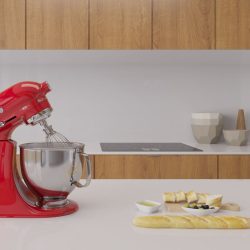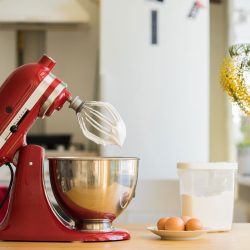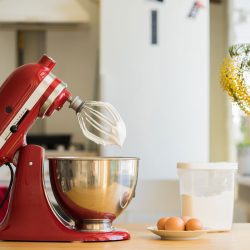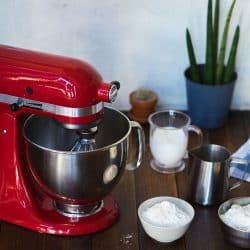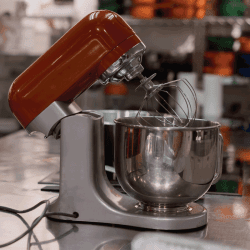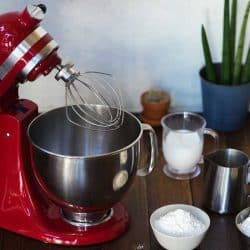If you're an avid baker, you know a KitchenAid mixer is on the wishlist of almost everyone. However, the different types of attachments can be overwhelming.
So, if you're standing in front of your mixer wondering which one to use to cream your butter and sugar, you've come to the right place. We've researched the topic in-depth and have the answer for you.
You can use the KitchenAid Flat Beater or the KitchenAid Flex Edge Beater to cream butter and sugar. Both attachments will successfully cream the butter and sugar.
However, one has the bonus of scraping down the side of the mixing bowl as well, so that's something to consider.
Now you know which attachment to use for creaming butter and sugar, but don't go anywhere yet! Keep reading to find out why one might be better than the other.
We'll also explain why you might not use other KitchenAid attachments to cream. Additionally, we'll discuss what some of the other attachments are for. With that said, let's dive in!
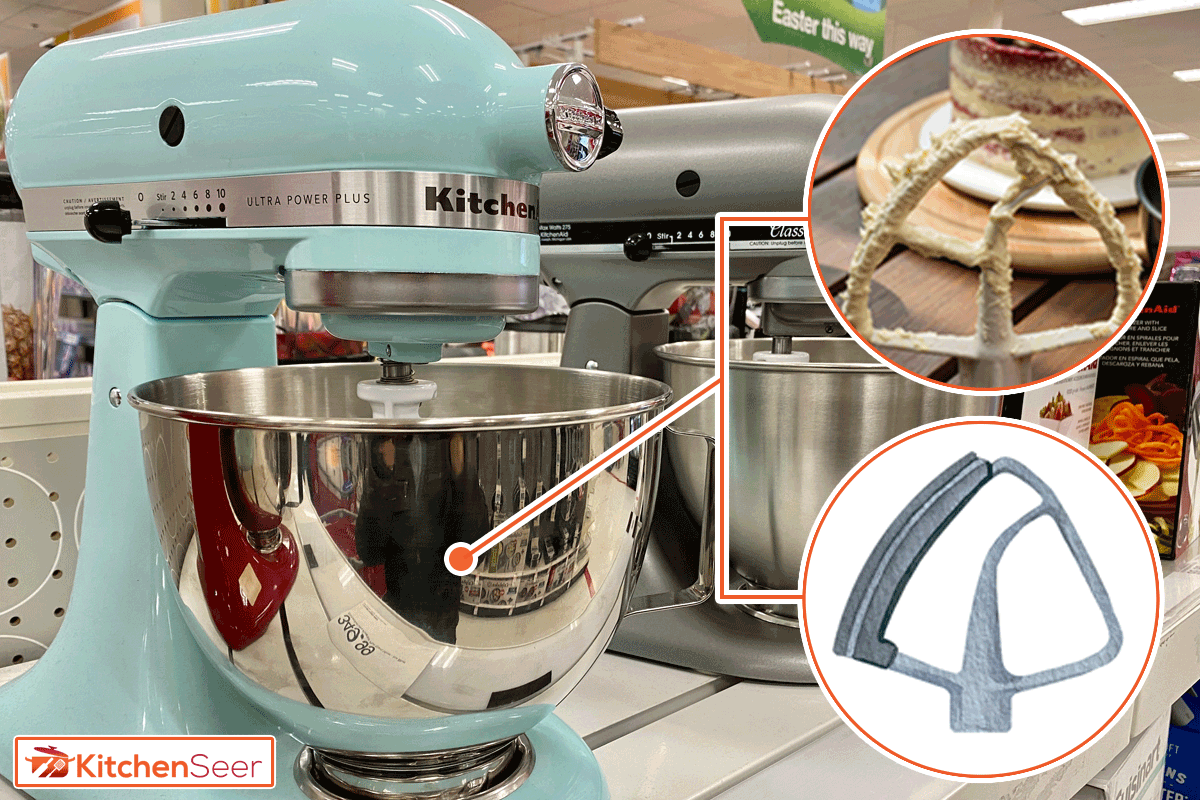
Creaming Sugar And Butter In A KitchenAid Mixer
The great thing about KitchenAid mixers is that they do a lot of your work. You no longer have to tire out your elbow to mix your batter with a whisk or wooden spoon frantically.
That is, if you set them up correctly. KitchenAid mixers come with a few different types of attachments and when to use, which can be slightly overwhelming if you are new to stand mixers.
All KitchenAid mixers come with a dough hook, beater, and whip. However, you can purchase additional attachments online if you wish.
You will always want to use a beater attachment for creaming butter and sugar. KitchenAid offers two different types of beater attachments.
Let's go over each of them below:
The Two Recommended Attachments
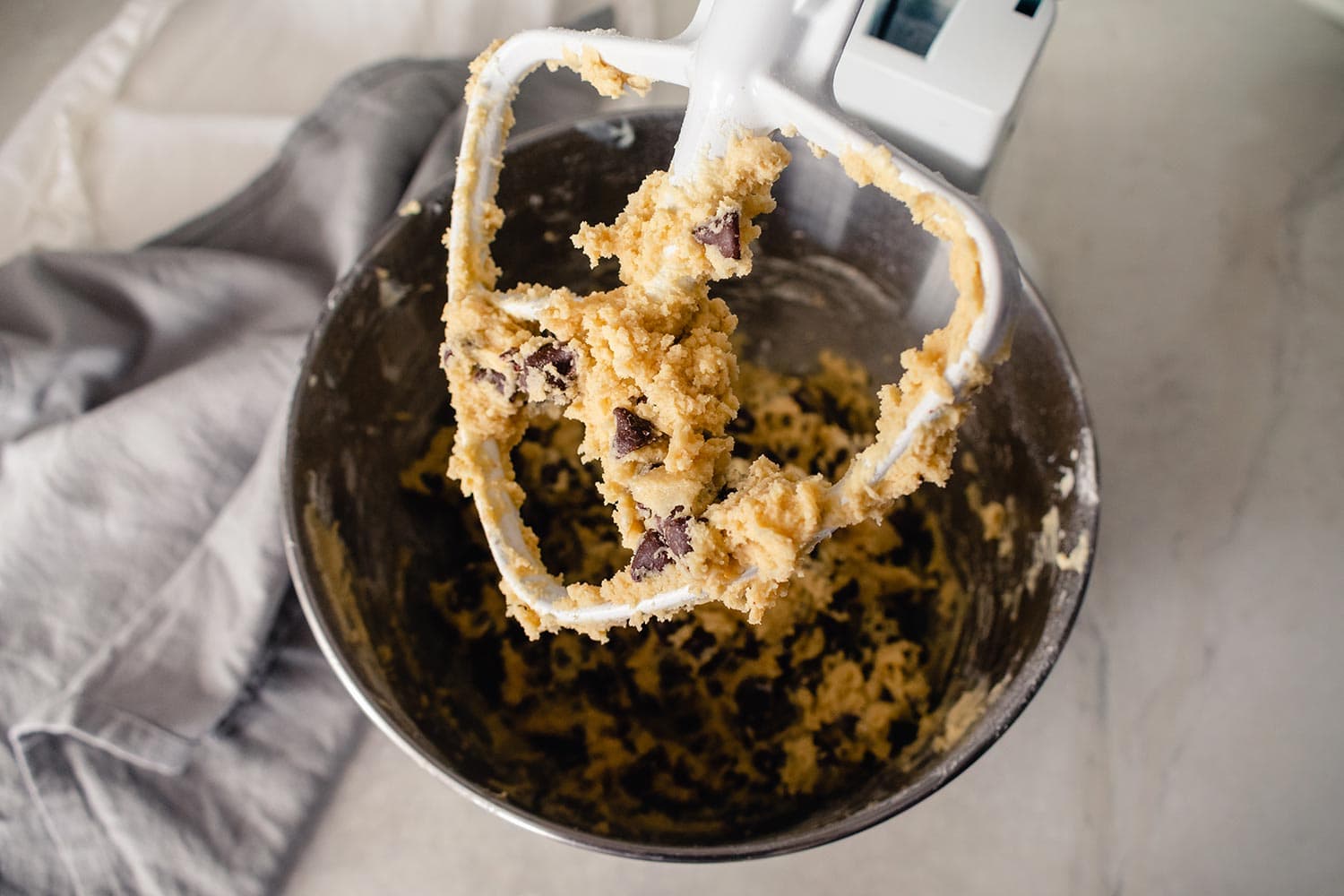
The two recommended attachments for creaming sugar and butter are the two beater attachments we mentioned earlier: the flat beater and the flex edge beater.
So, what's the difference? The two attachments look very similar; however, the flex edge has a flexible advantage that allows the mixer to scrape the edge of the bowl as it mixes the ingredients.
You can still achieve the same results with a beater; you might have to scrape down the bowl yourself.
If you're still unsure what the attachments can do, you should remember that you should use the flat beater for the same purpose as a wooden spoon.
The flex edge does the same thing, but it also performs the same duties a spatula would as well. One can also use the beater attachment for mixing cake and cookie batters and frosting.
See this KitchenAid Flex Beater on Amazon.
Attachments We Don't Recommend
You may have wondered why you can't use the whip for creaming butter and sugar. After all, it resembles a whisk and the smaller attachments you might have used on a hand mixer.
You can't use the whip attachment for creaming butter and sugar because the whip is primarily for whipping ingredients like egg whites and cream.
You can only use it on lighter ingredients, and its purpose is to add air to a mixture.
If you try to use the whip attachment to cream butter and sugar, the ingredients may pool in the center. If you don't cream the butter and sugar properly, it can cause the dough to be dense and cookies to collapse.
How Do You Beat Butter And Sugar With A KitchenAid Mixer?

Now you know which KitchenAid attachment to use to cream butter and sugar. Now, let's talk about how you use it and the best method for creaming butter and sugar.
The purpose of beating (or creaming) butter and sugar is to add air to the mixture. Adding air to the mix will make a more stable cookie and less dense cake.
It will also increase the number of cookies you can bake from a single recipe.
The Temperature Of Your Butter
The first step is making sure the butter is at the correct temperature. You might be tempted to soften your butter to make it easier to cream, but if your butter is too hot or cold, it can spell disaster for your recipe.
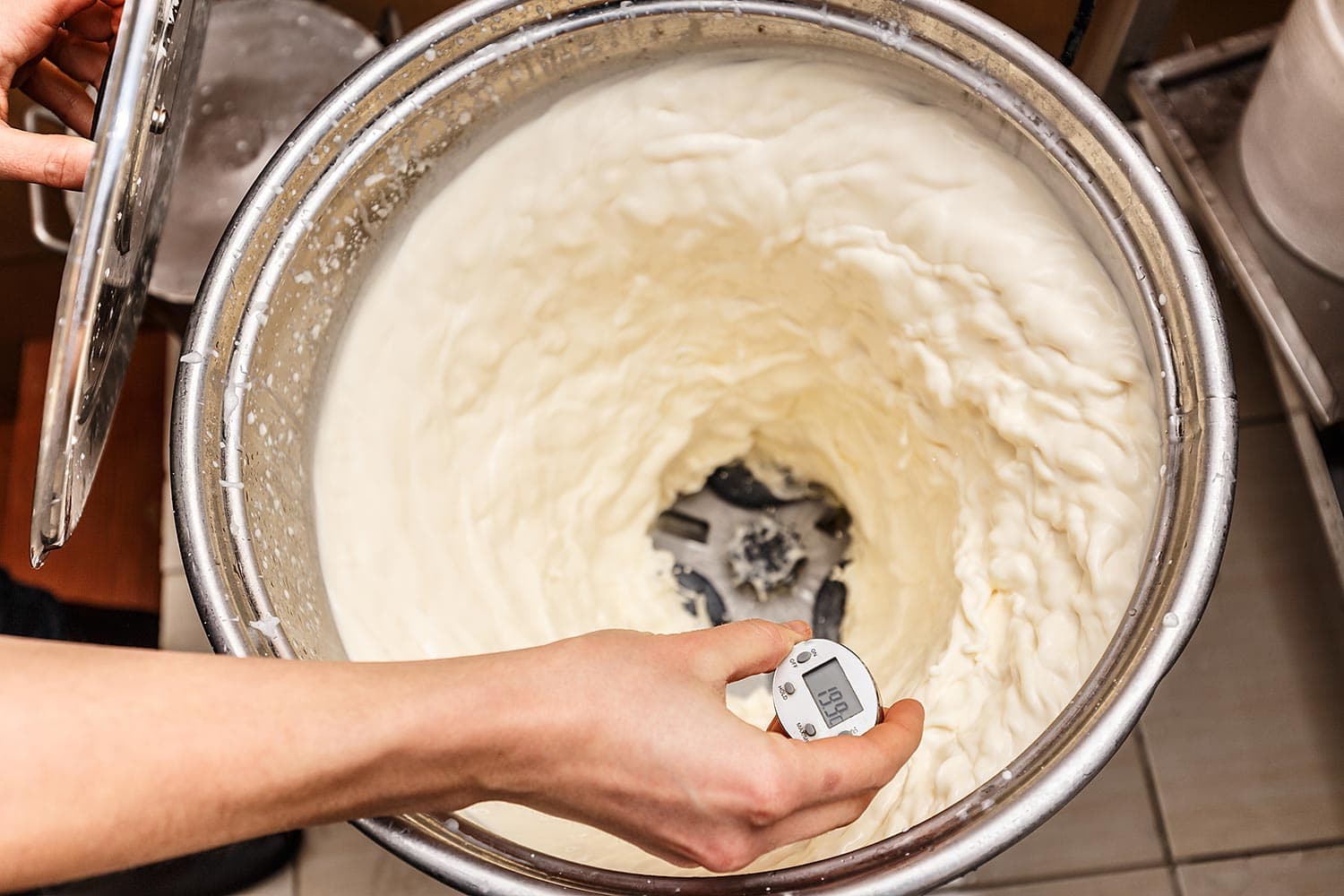
Butter should be between 60ºF and 65ºF. Measure the temperature with a thermometer if you can.
If you don't have a thermometer, you can check whether the butter is at the right temperature by pressing it with your finger. If your finger cannot make a dent in the butter, it's too cold.
However, if you can push your finger through, it's too warm.
Since creaming butter and sugar is to add air to the mixture, if it's too hot, the butter will not be able to hold the air.
View this thermometer on Amazon.
Creaming The Ingredients
Add the butter to the mixing bowl of your KitchenAid mixer, and attach the beater attachment of your choice. Using a slow speed, beat the butter for 20 to 30 seconds. Increase the speed slightly until the butter becomes creamy.
Slow the mixer speed again while you add the sugar.
Once you've added the sugar, increase the speed to a medium speed until your mixture is light and fluffy. If you don't use the flex edge beater, scrape down the sides periodically to ensure it is all incorporated.
Check out this YouTube tutorial on how to cream butter and sugar in your KitchenAid mixer:
What Does The Whisk Attachment On A KitchenAid Mixer Do?
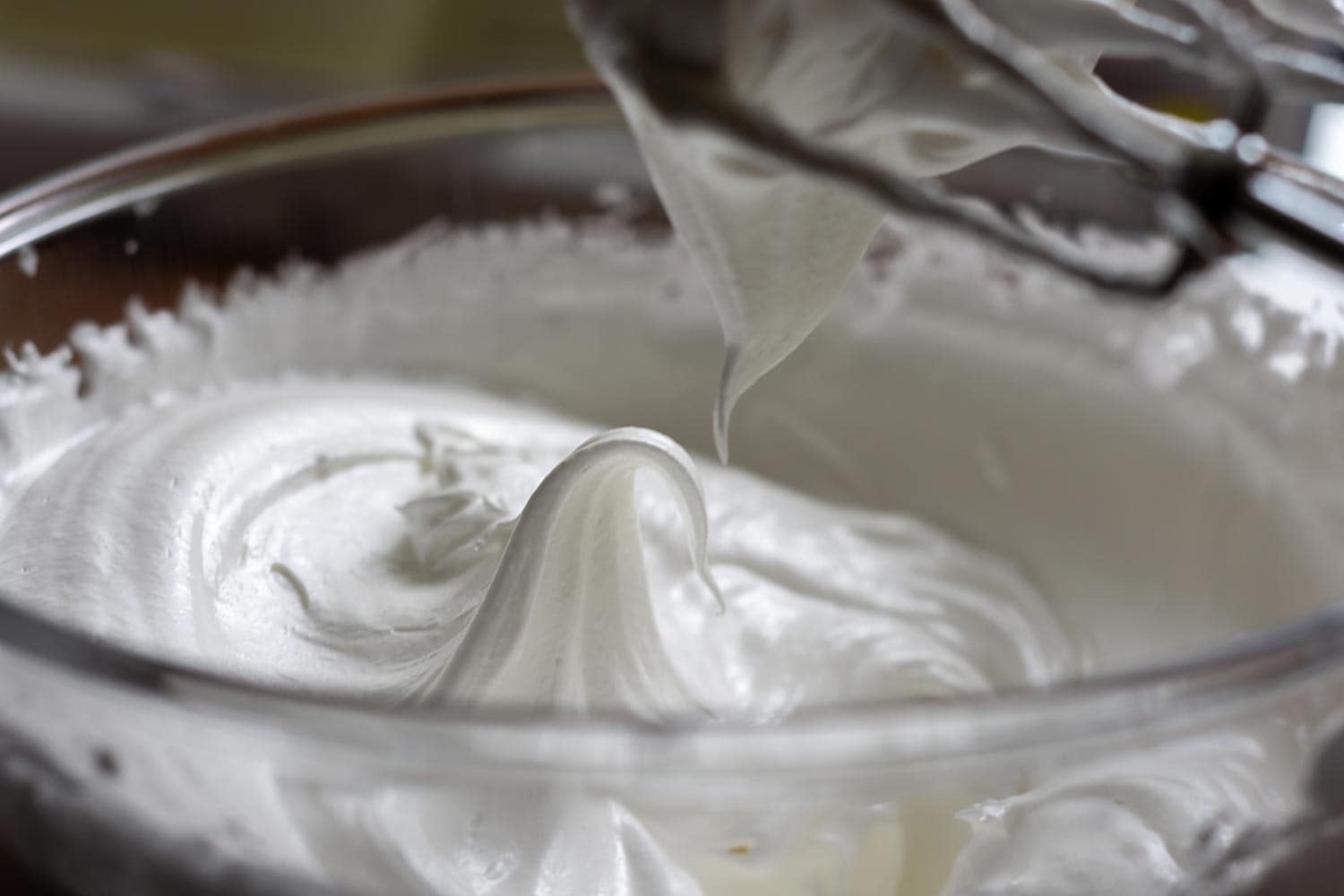
We mentioned briefly that the whisk attachment is used to whip air into egg whites and cream. You can also use it to whip batters.
It should be used at medium to high speeds to add air to the ingredient successfully.
It's used best for meringue, marshmallows, whipped cream, or any recipe that calls for stiff peaks. Stiff peaks are formed when you pull up the attachment, and the mixture holds its form, as seen in the photo above.
Can You Whip Cream With A Paddle Attachment?
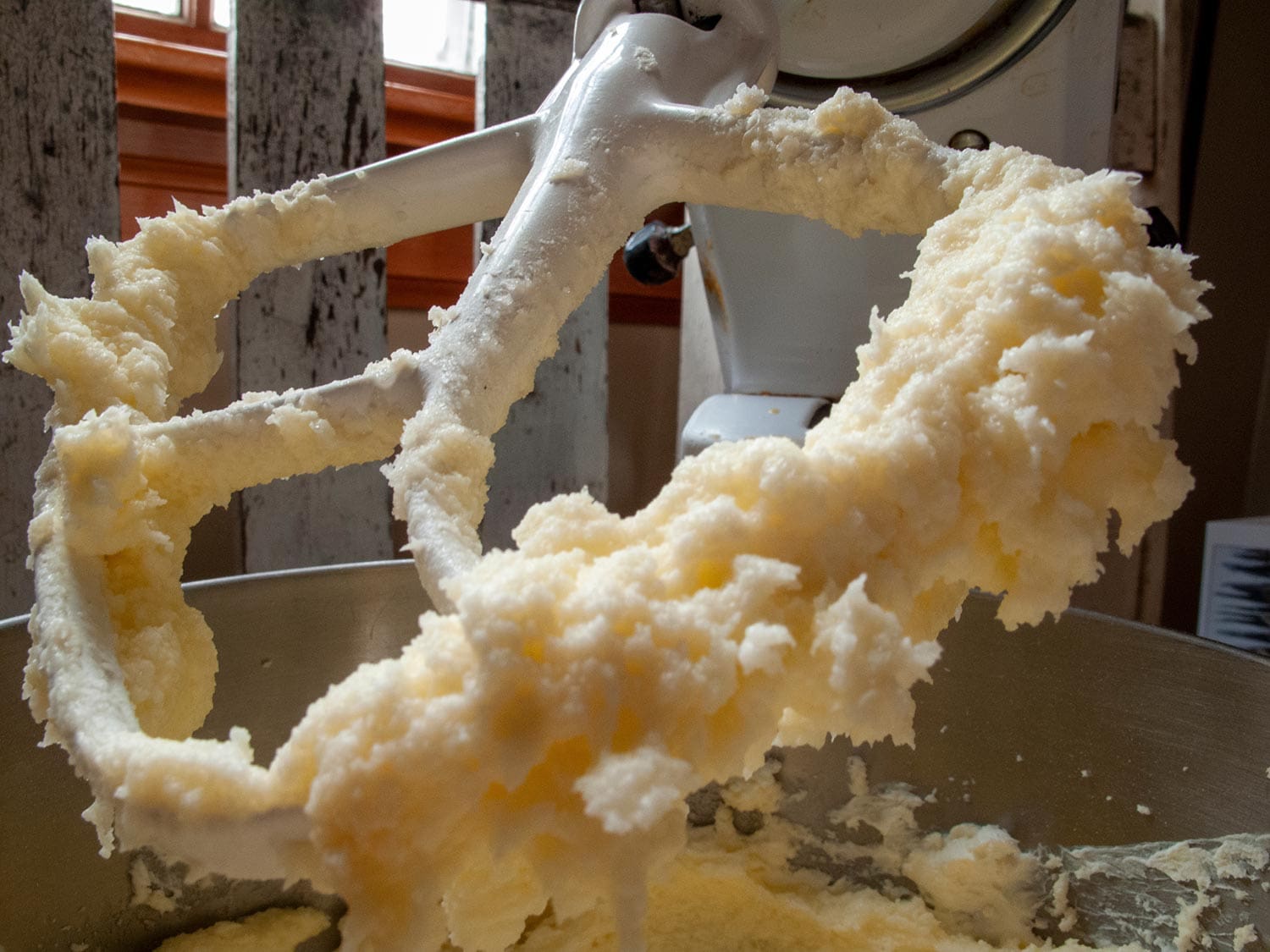
So you now know that it's not wise to try and do the job of the beater attachment with a whip attachment, but what about the other way around?
Good news, if you only have a beater attachment, you will still be able to whip cream.
Just be sure to set it to a medium to high speed. You may not be as successful using the beater attachment to whip egg whites.
If you're ever in doubt about which attachment to use, the beater is the most versatile and can be used for several different recipes and dishes.
What Are Spiral Mixer Attachments For?
The spiral mixer attachment is one of the bread hook attachments. KitchenAid offers two dough hooks: a "C" dough hook and a "PowerKnead" spiral dough hook.
Both hooks are used for kneading dough. The spiral attachment is used for kneading heavy doughs. KitchenAid recommends only using the dough attachments on speed two and no faster, even if a recipe suggests it.
If you're wondering how long or how fast you should knead your bread dough, look at some of our other blog posts on the topic here: How Long Do You Knead Bread Dough In A KitchenAid?
See this spiral attachment on Amazon.
Which KitchenAid Attachment Is Best For Cake?
For cakes, one should use a beater KitchenAid attachment. Cake batter does need aerating the way meringues do, so a beater attachment should be able to get the job done from start to finish.
Final Thoughts
Hopefully, you are more confident about which KitchenAid attachment to use for creaming butter and sugar. Not only that, we hope you have found our article even more informative and hope you are now more aware of what the other KitchenAid attachments should be used for. Happy Baking!
Made it to the end? Check out these helpful related KitchenAid posts!
How Long Can You Run A Kitchenaid Mixer?
Can KitchenAid Attachments And Bowls Go In The Dishwasher?




